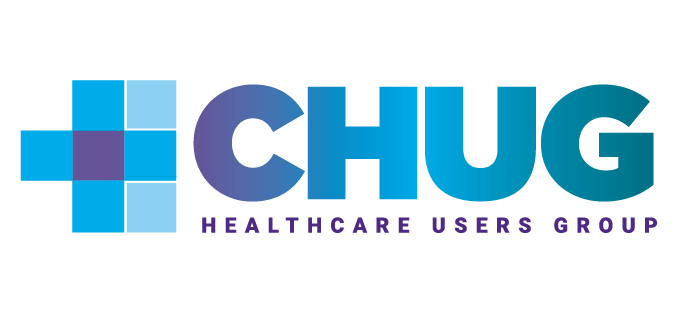7 Tips to Cultivate Your Trainer – Part 1 of 2
Article by Angela Hunsberger
Preparing your trainer to deliver an impactful learning experience is essential for getting the most return on your training program. Aside from the curriculum, learn how to inspire, groom, and mentor your trainer to enhance your program and promote skill set growth. A good teacher mixed with a thoughtful technique can make the difference in what learners retain.
This is the first of a two-part blog mini-series where I share the tricks of the trade with detailed tips surrounding 7 essential “train the trainer” categories.
Tip 1: Class Preparation
“By failing to prepare, you are preparing to fail.” – Benjamin Franklin
A lack of preparation can be the single obstacle for getting the learning session started. The instructor should ensure all system access is granted including connectivity to the training database, virtual environment, and the internet if needed. Should your trainer have issues getting technology working, make a list of all contacts including email addresses, phone numbers (including after-hours contacts), and physical addresses of the technical support team that can be called upon if problems arise. Their contact information should be readily available even if you verified system assess prior because issues can occur at any time during the training, not only at the start of class.
Poor preparation can slow down your class, interfere with the agenda, and cause undue stress for your trainer and students.
If traveling to a new location, arrange for security badges or sign in policies ahead of time. Obtain parking instructions or passes as well. It is helpful to drive by the new location prior to the day of training to familiarize yourself. Mapping your route the night before may provide a shorter estimated travel time than that during peak traffic. Considering classes held at larger medical campuses, it is helpful to locate the building and also the training room in advance. When scheduling same day classes at multiple facilities, allow enough travel time in between.
Once inside, scope out the training room environment to find outlets needed, assess the ideal classroom seat setup, temperature, and lighting. This is also a good time to test the projector and screen resolution.
Poor preparation can slow down your class, interfere with the agenda, and cause undue stress for your trainer and students.
Tip 2: Build a Strategic Agenda
Starting with the basics, include housekeeping items first including bathroom locations, vending machines, break times, and cell phone policies. For online sessions, ask the attendees to mute their lines and avoid placing the line on hold unless your class enjoys listening to the on hold music rather than the training material. For onsite classes, keep in mind big groups dining together for lunch can lead to a delay in food service resulting in a delayed start time after the break.
Next, structure the agenda to introduce the content in an order that makes it easy for learners to digest. Group related topics together. Decide when to “lay it on thick” and how to relieve the class with lighter topics. Plan for how topics will be consumed best based on the time of day. For example, morning topics require a fresh mind while after lunch topics can be easier, smaller chunks of information. Save “tidbit” easy learning material as fillers and weave in the content when appropriate.
Structure the agenda to introduce the content in an order that makes it easy for learners to digest. Group related topics together.
Now that you have a strategic agenda, review it at the start of the class. Set expectations. Personalize your interaction with the class by relating the agenda to the attendees’ roles. Doing so will communicate to the attendees that their learning is meaningful and time well spent.
A bonus tip regarding the agenda is to first master the curriculum then review the agenda from time to time to evaluate the flow and make changes based on prior experience. Modify the agenda as needed for continuous improvement on providing an ideal learning experience.
Tip 3: Be Flexible While Staying on Task
A classroom full of students with a blank stare and glazed over eyes may indicate it is time for a break. Your agenda is a guide to learn but you must be flexible and know how to read people. Enhance the experience by allowing for off topic questions or conversations when appropriate. This shows flexibility and acknowledgement for learners’ knowledge, experience, and questions. Questions and conversations are a cue to the instructor about how engaged the students are with the content. Remember, it is ok to say “we will cover that later” or setup a parking lot to acknowledge the topic and provide a place to circle back while keeping the agenda on course.
Tip 4: Presentation and Training Techniques
“Tell me and I forget, teach me and I may remember, involve me and I learn.” – Benjamin Franklin
Remember that feeling of being new? Keep that in mind when introducing new material. Avoid technical speak, jargon, and explain acronyms. As trainers, we sometimes forget this is the first time students are seeing and hearing concepts that are familiar to us. We tend to be more technical and breeze by everyday details that may be new to students. Information is better digested when we leave out unnecessary deep details. Too many details will lead to information overload. As the systems expert, we may know all of the layers, but be cognizant to include only what the student needs to absorb. With that, your trainer may be asked not to share all system features with staff. Some choices are made for a reason so it is important to know topics to avoid during class.
Because learning styles vary from person to person, it’s a good idea to discuss a new topic first, provide a demonstration, and then offer hands-on learning to let students practice. Create an exercise that walks through each step. Allow students to follow along remembering to pause while they write down notes.
Because learning styles vary from person to person, it’s a good idea to discuss a new topic first, provide a demonstration, and then offer hands-on learning to let students practice.
More than half of what we retain is through visual learning. Visuals can enhance the learning experience and help students absorb concepts. For example, holding up a prop, placing an object in front of each computer, holding a paper chart. Pass out learning aids when appropriate rather than “overloading” students with a packet of handouts at the start of class. Think of the marketing concept “deliver the right message at the right time”. An example of a fun learning technique is a game used by Nurses Etc. Staffing LLC, a staffing firm and certified nursing assistant school in the Midwest, called Gloves or No Gloves. When running through protocols each student has a set of latex gloves in front of them. The instructor describes a clinical scenario and the students race to put on gloves or hold their hands up without gloves. Richelle Vandiver, LPN and owner of Nurses Etc. Staffing explains, “It is a fun twist on learning and the students really enjoy the activity while also learning how to properly put on the gloves. The scenarios stick with them and they are able to recall the protocols during certification testing.”
An unexpected strategy to enhance your learning program is to alternate trainers between topics. This is a win-win because a break refreshes your trainer and a new voice refreshes the students. People have different styles of teaching and learning. Diversity in trainers can fill the gaps of learning.
Another unique strategy is using positive psychosocial vocabulary when teaching material. As a software instructor, students will come to class with pre-conceived notions and opinions based on their past experiences. Teaching the software is similar to “selling” the benefits of its features and workflows. For example, instead of saying, “this is how you document a patient’s vitals”, you say “Look how easy it is to document the patient’s vitals. The system displays the last value and automatically records your user name.”
When showing familiar concepts, connect with students by drawing on their background and experience. Use that knowledge to address topics of interest and allow users to share their experience. Even new employees have something to offer. Acknowledging when they teach you something or when they have an idea or contribution.
Albert Mehrabian, a professor of psychology, created a communication model that, in essence, describes that the majority of what we communicate is not through spoken words, but through tone of voice and body language. This methodology is helpful when training tedious, detailed software. Use your tone and pace of voice along with physical space to keep energy and enthusiasm during class. As an instructor, you may have thought this same class hundreds of times and the material may seem stale in your perspective. For example, use your physical space to walk around the classroom when lecturing. Think of a music concert when the artist connects with the crowd by physically moving towards them. Stop by each desk during independent practice time. This use of physical space invites students to ask questions that they may have otherwise kept to themselves. Stay conscious of your tone of voice, volume, and pausing between concepts can facilitate learning and put a fresh spin on topics. Pausing between topics communicates to the users that you are changing gears, or maybe they should be writing down notes.
One great way to help the information sink in is to assign topics to groups or users for review and ask them to “teach it to the class”. This places responsibility on the student to listen carefully and master the content since they know they will need to explain it out loud.
Considering visual learning is common so use techniques to direct the students focus on what is important. For example, when projecting your computer screen to walk through a prescription refill, stay on one screen rather than clicking between several windows. As you click through the workflow, verbally describe what you are doing even though it may seem obvious. “I’m going to click on the medicine bottle to initiate the refill, then I am going to place a checkmark next to the medication.” Another technique that is helpful is to say “I am going to pause here and break apart this screen so you may become acquainted with what you are looking at.” Give a tour rather than clicking everywhere or moving your mouse or laser pointer around too much. These methods help keep your students focused.
When students are learning computer systems in the healthcare IT environment, they are learning skills needed to do their job. One great way to help the information sink in is to assign topics to groups or users for review and ask them to “teach it to the class”. This places responsibility on the student to listen carefully and master the content since they know they will need to explain it out loud. This method adds a whole other dynamic to what the student absorbs.
While you introduce material, be sure to pause for questions. It’s easy to get lost in the flow of things and breeze by several topics before remembering to offer the opportunity for students to ask questions. Recap and provide a summary highlighting the key points of the lesson. Do early checks with the students by calling on individuals. A test of self-control is to allow the student enough time to answer during a verbal quiz. Answering too quickly may result in removing that learning moment for the student.
Stay tuned in for next week’s next installment of 7 Tips to Cultivate Your Trainer to learn the remainder of these great insights.
Until then, feel free to learn more about training best practices with our roadmap, Effective Training: Keys to Improving Clinical Documentation and Financial Performance.



